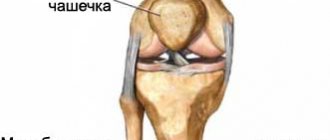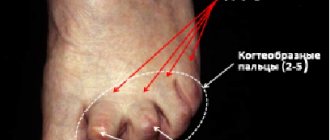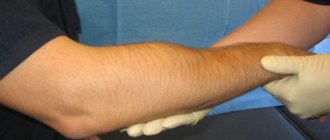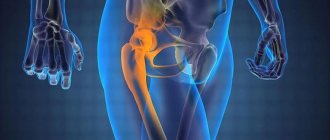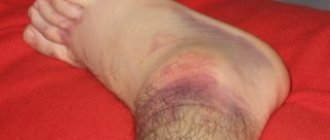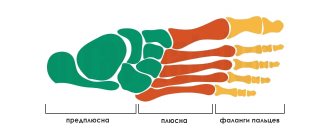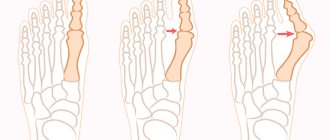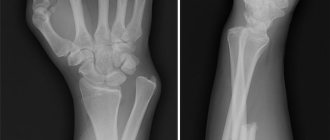Fractures of the fingers on the right or left hand are quite common. This injury can cause significant inconvenience in everyday life, since we perform a large number of actions with the help of our fingers. They can perform very fine movements that are necessary for work and other activities.
The human hand is very functional. It is made up of 27 bones, as well as ligaments, muscles and tendons. Each finger has three small bones - phalanges, except for the thumb - it consists of only two phalanges.
Fractures of the phalanges, most often, are the result of direct trauma or impact, less often they occur as a result of diseases (osteomyelitis, cancerous tumors, etc.)
This damage results in limited mobility, difficulty bending, and pain with activity. Incorrect treatment can lead to unpleasant consequences, so if symptoms appear, you should definitely contact a medical facility.
Types of fractures
A fracture of the thumb can be divided into two types:
- traumatic;
- appearing under the influence of other influences or diseases.
It should be noted that their symptoms are very different. Most often, the first type is characterized by concentrated and sharp destruction of bone tissue. In a different form, the fracture may be a consequence of long-term destruction, as well as cracks formed earlier.
All bone tissue fractures according to the type of damage can be divided into the following types:
- Helical - on an x-ray, as a result of a fracture of the thumb, you can see the formed acute angle. The resulting fragments in this case will be directed in different directions from the bone.
- Oblique - on an x-ray you can see a clear image, which shows the presence of a sharp bone lobe, as well as a cut at an acute angle.
- Comminuted - this injury is characterized by the presence of at least three pieces of bone tissue at the base of the fracture. In the photograph, a gap remains visible between the chips. Such voids can be either vertical or horizontal.
- A longitudinal fracture of the thumb is a fairly rare injury in which the bone of the thumb is separated into two parts along the proximal and distal phalanges.
- Transverse - as in the previous version, the bone is divided into two parts. Only in this case the fracture occurs across, and not along the base of the entire bone tissue.
Traumatic fractures are classified separately. A thumb injury can be:
- Open. This is a fairly severe form of injury. In this case, along the fracture line, all bone fragments are visible through the skin. The severity of this ailment is determined by the fact that the risk of infection of both flesh and bone tissue increases. For the distal and proximal phalanx, the risk of developing acute osteomyelitis increases.
- Closed. It is considered a more successful type of fracture, in which there is no damage to soft tissue. The fragments are placed exclusively at the site of injury.
Depending on how the thumb is broken, a decision is made to undergo surgery or conventional treatment that does not involve surgery.
Main types of fractures
Watch a video about how a finger fracture occurs and what the fracture sites are:
Thumb
As a rule, a fracture of the thumb occurs as a result of a severe bruise. During its treatment, certain difficulties may arise related to the location of the bones.
First of all, doctors reduce such fractures - for this they use special stretching devices. Immediately after the stretching process, a cast is applied to the sore finger. Thanks to the plaster, the damaged finger is correctly fixed, and the bones remain motionless until the fusion process is completely completed.
Forefinger
If you have a fracture of your index finger, you should immediately consult a doctor who can correctly replace the dislocated bone, if there is a dislocation, and put a plaster on your finger. In addition, doctors prescribe certain painkillers to their patients. Complications during the treatment and rehabilitation of this fracture almost never occur.
Middle finger
A fracture of the middle finger is practically no different from injuries to other fingers. The only thing you can’t delay is going to the doctor. If you consult a doctor a few months after the fracture, there is a possibility that the finger may lose its basic functional properties.
Ring finger
Treatment of ring finger injuries, in most cases, occurs without complications. But still, when the patient is in a cast, it is necessary to perform certain physical exercises with healthy fingers so as not to lose the normal functionality of healthy limbs.
Little finger
As a rule, injuries to the little finger occur as a result of an unfortunate fall. The movements of a broken finger are significantly limited, and when trying to straighten, patients complain of sharp pain. This fracture, like any other, does not need to be treated independently. Because such treatment may lead to undesirable consequences (for example, limited functionality, pain, incorrect finger position). I suggest you watch a video about how surgery is performed for a broken finger (little finger):
Causes of fracture
Quite often, the causes of this problem are various games with a hard ball or falls on a limb. During a fracture, you can get a dislocated or bruised finger on your hand, which will further aggravate the current situation. You can get this type of injury due to a weighty object falling on the hand or getting caught in the driving mechanisms.
The location of the injury can be very different. Fractures are located inside the joint or can be divisoral, as they always accompany an unsuccessful outcome.
Signs
Fractures of the fingers occur due to blows and falls, when external force exceeds the strength of the bone. They are often treated as minor injuries. But inadequate treatment can lead to lifelong disability. Bone tissue defects can be multiple, combined with damage to tendons, nerves, ligaments and other functional structures of the hand.
Symptoms of a broken finger:
- diffuse swelling of the injured finger;
- subcutaneous hematoma;
- abnormal mobility along the phalanx;
- local soreness;
- crepitus;
- limitation of movement due to pain.
The patient tries to spare the injured finger and tries not to move it. Complains of decreased or absent grasping ability of the hand.
Displaced fracture
A displaced finger fracture usually occurs under the influence of a traumatic agent and during contraction of the lumbrical and interosseous muscles. Deformation and shortening of the finger are determined. Palpation reveals a bony protrusion in the form of a step on the palmar surface. The mobility of fragments is diagnosed.
The photo shows a closed intra-articular fracture of the middle and ring fingers.
Characteristic features:
- it is impossible to fully straighten the injured finger;
- clench your hand into a fist;
- pressing on the distal phalanx along the long axis provokes pain in the area of the suspected fracture;
- when placing the palms on the table, it is not possible to ensure that the injured finger adheres to the plane.
Displacements during fractures are divided into relatively favorable and absolutely unfavorable. In the first option, an angle is determined between the fragments, open to the palm side, in the second - to the back. Much more often, displacements are unfavorable.
Non-displaced finger fracture
Usually the nail phalanx is injured, less often the proximal and middle ones. Injury to the distal phalanx (tip) is often accompanied by subungual hematomas, which cause severe pain. In case of cracks and fractures without displacement, there is no pronounced deformation.
Symptoms of a broken finger may be similar to a bruise or sprain. Damage is often masked due to hemorrhage and increasing swelling. Due to the bruise, the finger becomes bluish in color. If a finger fracture is suspected, an x-ray examination is always performed.
Useful: Anti-cold medications are inexpensive but effective
At-risk groups
A fracture of the thumb occurs quite often in the following categories of citizens:
- Children.
- Professional athletes who most often play basketball, boxing or volleyball.
- Patients with osteoporosis.
- Elderly.
- People working with dangerous machines.
- Women who are going through menopause.
First aid: how to act correctly?
The injured limb is immobilized and a cold compress is applied.
A marginal fracture of the index finger and other phalanges is painful due to the location of many nerve endings. To alleviate the condition of the victim, first aid is provided quickly as follows:
- Give your hand some rest.
- Apply a cold compress wrapped in a cloth, avoiding direct contact with the skin.
- Treat the wound in case of an open fracture, without touching or straightening the bone fragments yourself.
- Place a cotton swab between the diseased phalanx and the healthy one. If the skin is damaged, you can use tilexol, a dressing that does not stick to the wound.
- Apply a fixing bandage, making sure that it is not too tight.
- Give painkillers.
- Deliver the victim to a medical facility.
Symptoms of a thumb fracture
- Immediately after acquiring an injury, a person feels pain and a strong burning sensation in the area of the thumb.
- Upon examination, it can be observed that the area of injury will be greatly enlarged due to the formation of edema.
- When examined by a doctor, he will definitely see redness of the epidermis at the site of the fracture.
- In some victims, due to the fact that the finger is swollen and the bone moves slightly, the phalanx deviates in the other direction.
- The finger may be very pale with an area of hematoma.
- A hemorrhage often forms under the victim’s nail, which will subsequently lead to detachment of the nail plate.
- A person who has been injured partially or completely loses the ability to actively move. However, in some patients, on the contrary, pathological mobility of the thumb can be observed.
- Quite often, a fracture of the phalanx of the thumb is accompanied by a change in the integrity of the nail layer.
- At the moment of palpation, you can hear the crepitus of the fragments (a characteristic crunching sound that occurs when they rub against each other).
- After an injury, the axis of the thumb will necessarily be damaged.
- One of the symptoms of this problem is the activation of pain when the doctor gently taps the top of the finger towards its base. You need to remember: if there is a displaced fracture of the thumb, then such a procedure is strictly prohibited, as it can aggravate the situation.
- Sometimes doctors, without x-rays, are able to palpate a bone defect in the area of injury.
- Upon examination, you can see that the injured finger has become slightly shorter in relation to the healthy one.
- When the finger is hit by heavy objects, a visually pronounced deformation of the bone is formed.
- Due to the severe pain of the thumb at the base, the victim will certainly have impaired hand function.
- Palpation of the injured area causes very painful sensations in the patient.
- If the patient has open fractures, parts of the broken bone may be visualized from the wound surface and active bleeding may be present due to vascular damage.
How long does it take for a broken finger to heal, and how to speed up this process
The healing time of a fractured finger on the hand depends on many factors: the age of the victim, the complexity of the injury, the presence of a hematoma, the sensitivity of the injured area, the time and professionalism of first aid, and compliance with doctor’s instructions. On average, the period of incapacity for work lasts 22–23 days. The formation of callus can take up to four months.
Often the cause of slow healing of a fracture is an imbalance of sex hormones in the body. The fact is that these biologically active substances direct the work of bone tissue cells, which renew the spongy layer of bone after damage and integrate minerals (including calcium) into the collagen framework of the bone. The level of sex hormones begins to gradually decrease after 35 years. This invariably affects the ability of bones to renew themselves. Recovery processes slow down and callus formation takes longer.
The normalization of hormonal levels will speed up the healing of a fractured finger. This can be done in two ways:
- compensate for the deficiency of your own hormones by taking their synthetic analogues;
- stimulate the production of your own hormones.
The first method is fraught with a large number of serious side effects, and therefore the second is more preferable. It was he who formed the basis for the creation of the new osteoprotector Osteomed Forte , the developer of which was the Russian professor, founder of the Volga Region Osteoporosis Center V. I. Strukov.
The drug contains a unique natural component that allows you to activate the production of your own sex hormones, normalize their balance, and stimulate bone formation processes. In addition, it contains adequate doses of the building material for bone tissue restoration - calcium. And also vitamins D3 and B6. The latter is directly involved in biochemical reactions and processes directly related to metabolism in bone tissue and promotes the formation of bonds between collagen chains.
Clinical studies of the drug have shown its ability to safely accelerate the formation of callus by 1.5–2 weeks.
This drug can be purchased in the Parapharm Shop online store
Diagnostics
In order to understand how to determine a fracture of the thumb, you definitely need to be a doctor. It should be noted that diagnosing this problem is not always easy. But very often, literally by sight, without using an image, you can diagnose the presence of a disease. X-rays are most often needed only to confirm certain symptoms.
Diagnosis becomes more complicated only when medical care was provided incorrectly or was not provided at all. And also in the case when the finger is swollen, palpation becomes problematic.
Possible complications
An improperly healed fracture of a finger can lead to unpleasant consequences that will significantly affect the functionality of the hand and the person’s future life.
The most common complications are:
- Vicious union. Leads to limited mobility.
- Osteomyelitis. This is a chronic disease that occurs when an injured area becomes infected. It causes severe pain. It can only be treated with surgery.
- Formation of pseudarthrosis or false joint. In this case, the finger will bend in a place where it should not bend. This happens if the immobilizing bandage was not applied tightly enough or incorrectly. In this case, the fragments are rubbed against each other, and the bone canal is overgrown, leaving a small space between the fragments. This can only be corrected through surgery.
- Formation of a large bone callus. If the fragments were not juxtaposed correctly, a very large bone callus will form at the junction. It not only looks ugly, but also limits the movement of the finger.
- Contractures. Prolonged immobilization can cause the tendons to become shorter, causing the finger to lose some mobility.
- Ankylosis or complete immobility of the joint. This happens if the fracture occurs near a joint. If treated incorrectly, the finger loses some of its functions. There is no cure for this complication.
Read also: Ways to use joint cream Zdorov
First aid
If possible, you should immediately go to the emergency room. If this is not the case, you must call an ambulance.
There are times when help must be provided immediately before the ambulance arrives. In this case, you need to know certain rules.
The fracture always causes severe pain in the joint of the thumb, but due to the release of adrenaline into the body, the victim does not feel it. However, after 2-3 minutes the effect of the substance stops. At the site of a fracture or bruise, very strong sensations arise that the person can barely tolerate.
After identifying the source, it is necessary to “freeze” the place. For this, a cold object is used, which is an analogue of anesthesia. It will not be possible to completely eliminate all unpleasant sensations, but it will be possible to reduce the post-shock situation.
If there are painkillers at home, then you need to give them to the victim in the amount indicated in the instructions.
Regardless of whether a finger is fractured or bruised, the limb must be secured. A special material is used to apply the splint. Most often it is not at hand, so it will be enough to fix the thumb to the adjacent one. When fixing, do not forget that in the future the phalanx will increase in size because it will swell, and an overly tightened bandage will block the flow of blood into the limb. Therefore, it is necessary to record very carefully with the calculation of the reserve.
First aid
A fracture of the little finger on the hand requires professional treatment. If a person experiences symptoms consistent with a broken finger, first aid should be provided.
What you should do:
- calm the person down and give him an analgesic (for example, analgin, ibufen, etc.),
- call an ambulance or a taxi,
- if there is an open wound, carefully treat it with an antiseptic and carefully apply a bandage,
- if heavy bleeding occurs, you should use a tourniquet, remembering exactly the time of application,
- immobilization of the upper limb: apply a bandage using branches, sticks or other available means. The hand should be fixed in the position in which the patient feels the least pain. The splint should rest on the finger at one end, extending 2-3 cm above it, and on the palm at the other. You need to bandage from palm to finger. If it is not possible to apply a splint, bandage the injured finger to the adjacent one,
- Apply ice from time to time
- It is better to keep your hand suspended on a scarf over your shoulder.
Read also: Treatment at home for arthrosis of the shoulder joint
Remember that the victim may have a complex comminuted fracture, so all actions should be as careful as possible so as not to aggravate the situation.
Conservative treatment
Any doctor should begin treatment for a displaced fracture of the base of the thumb only by comparing all the fragments.
Initially, local anesthesia is performed using Lidocoine or Novocaine, and then the doctor performs reposition. The doctor's assistant stretches the entire length of one arm by the thumb, and with the other hand stretches 2–5 fingers. The surgeon needs to place a bandage in the first interdigital gap, and then by pulling on the bandage he performs countertraction. This manipulation is done for 5–7 minutes.
The doctor's further actions are aimed at placing the thumb in the position of maximum abduction, and then applying a plaster cast to the thumb and a circulating bandage, which secures the entire thumb and is secured to the upper third of the forearm.
A patient who has already had a plaster cast undergoes a repeat X-ray examination to confirm that everything was done correctly.
For a non-displaced fracture, conservative therapy consists of applying a Baler splint (palmar plaster tape is also very often used). Many patients are interested in how long it takes to heal a fracture of the thumb. With such an injury, the victim needs to walk with a cast for 2-3 weeks, and then, within a month, everything is completely restored.
When a victim suffers a tendon injury in addition to a fracture, it is initially necessary to achieve fusion of the bones, and then the doctor performs tendon plastic surgery.
Treatment
For speedy healing of the injury, the doctor must choose the most appropriate treatment method. There are three main methods:
- closed reduction (conservative method),
- skeletal traction (conservative method),
- open reduction (surgical method).
Conservative treatment
It is performed for a closed fracture with or without displacement. If there is displacement, it is necessary to reposition the bone fragments. To do this, the patient is given local anesthesia and special manipulations are performed. After this, a plaster cast is applied. After application, the hand should be kept in an elevated position for two to three days. This will help avoid the formation of large swelling.
Skeletal traction is performed if it is not possible to compare the fragments in the usual way, or if the fracture is comminuted. Local anesthesia is also given. A plaster splint is placed on the hand, and a wire with a hook is attached opposite the broken finger. Through soft tissue, the fragments are put in place using staples, threads, etc. After this, the person must take medications to relieve pain, inflammation and antibacterial action.
Surgery
Surgery is prescribed in the case of an open injury, a complex multi-fragmented type, as well as if the bones have fused incorrectly or with purulent complications.
Surgical treatment
The operation for this disease is performed using screws and knitting needles. It may include two or one stage:
- With one-stage osteosynthesis, the patient's bone fragments are fixed with various devices that remain on the bone throughout his life. The regeneration process takes approximately one and a half months.
- With two-stage osteosynthesis, all fasteners are removed 3-4 weeks after surgery. In this case, recovery will take two months.
After the plaster is removed, a person is required to undergo rehabilitation measures, which include massage, physiotherapy and therapeutic exercises.
When a patient has pain in his thumb at the base, he is advised to undergo thermal procedures, which include salt baths and dry heat.
Complication of a fracture or why fingers go numb
Patients often experience numbness in their fingers after the cast is removed. This symptom may be a consequence of injury, its neurological manifestation. It goes away over time after massage, therapeutic exercises and physical therapy.
A parallel injury to the nerve that innervates the damaged fingers cannot be ruled out. Numbness in fingers 1-4 is considered a sign of median nerve involvement. Sensory impairment is limited to the palmar surface of the first finger, the dorsal and palmar surfaces of the second and fourth fingers. Reasons include compression by swelling, thickened finger flexor tendons, callus or plaster, and many others.
If compression of the nerve fiber occurs due to postoperative tissue swelling, then this is a transient phenomenon. It is also associated with the accumulation of biological fluid (blood) in internal hidden cavities. It is better to report numbness to the specialist who performed the operation. He will determine the provoking factor and decide whether intervention is necessary or whether it is necessary to wait for spontaneous healing.
Using the finger clamp
The procedure for comparing the fragments is carried out by a doctor, who initially numbs the fracture site. Regardless of the severity and type of fracture, a fairly important step in therapy is immobilization of the damaged area using special methods:
- Plaster cast - it is located from the upper part of the forearm to the end of the injured finger, which must be partially open to monitor the presence of normal blood circulation.
- A good alternative to plaster is a rigid fiberglass splint, which is used most often in difficult cases. A similar clamp is placed from the wrist to the end of the phalanx and secures it firmly.
- Lately, a special orthopedic fixation – an orthosis – has become increasingly popular. This is an innovative device used to immobilize a damaged phalanx. It is attached at the level of the distal and middle phalanges, forming a reliable fixation. For a thumb with an injury, the orthosis is made in a special shape. It uses certain materials, which, unlike a plaster cast, are quite comfortable. The retainer is easily removed, but you need to know that such manipulation is performed exclusively under the supervision of a doctor. Otherwise, the regeneration process may take a long time.
Mechanisms of finger injury
More often the main phalanges of the 1st and 3rd fingers are injured. For the 3rd finger, fractures of the middle phalanges are considered typical. Nail injuries are typical for the 1st and 5th fingers. Oblique, oblique-transverse and helical fractures are formed. Comminuted fractures with fragments creeping onto each other are observed. This is facilitated by the special anatomical structure of the hand with a high degree of mobility of its formations.
Depending on the location of the damage, the following are diagnosed:
- fingertip injuries;
- nail phalanges;
- phalanges of the fingers and structures included in the finger.
The mechanism of injury in fractures of the nail, middle and main phalanges is straight. The cause is compression, crushing, bruise.
When a straightened finger is struck, a sharp and excessive bending of its tip occurs. A finger with a curved tip becomes like a hammer. Hence the name of the injury “hammer toe.” He remains in this position and can only straighten up with the help of his other hand. This is the result of an injury to the extensor tendon. Most of these injuries heal without problems if properly treated.
How long does the cast last?
Closed fractures with proper care do not pose a particular danger, so the period of wearing such a bandage is 2-3 weeks. Complete regeneration occurs after 3–4 weeks.
For moderately complex fractures, it will take 6–8 weeks. The first four weeks are aimed at plaster immobilization.
Recovery from complex fractures takes up to ten weeks. Wearing the cast using wires and screws takes up to six weeks. If complications arise during rehabilitation, this period may increase.
Recovery
Therapeutic exercises
Rehabilitation of a broken thumb or other phalanx begins after the fixator is removed. Prolonged immobilization provokes muscle atrophy, therefore, to develop the joint, it is important to perform the following exercises:
- clenching the phalanges into a fist;
- drum your fingers on a hard surface, imitating playing the piano;
- pulling the wrist up to the tip of the finger (“Caterpillar Movement”);
- flexion-extension of the distal phalanx, helping with the healthy hand;
- kneading plasticine or dough with a brush;
- spreading and closing the fingers.
Physiotherapy
Under the influence of current, the healing agent acts at the cellular level.
Rehabilitation after a broken finger includes the following procedures:
- UHF therapy;
- magnetic therapy;
- electrical stimulation method;
- electrophoresis;
- laser therapy;
- ultraviolet irradiation;
- exposure to ultrasound;
- diadynamic current treatment;
- warming wraps with paraffin or ozokerite.
The effects of methods on broken fingers are as follows:
- restore the mobility of the phalanges;
- promote the production of joint fluid;
- accelerate tissue and cartilage regeneration;
- relieve symptoms of inflammation and swelling;
- saturate tissues with oxygen;
- improve metabolic processes in the joint;
- strengthen muscles.
Maintaining hygiene
Chamomile has antiseptic properties.
Marginal fractures of the nail phalanx and other joints of the finger require prolonged wearing of a cast. During this period, there is almost no contact of the skin with air, which is why the upper layers of the epidermis peel off. The space between the fingers requires special attention. After removing the fixative, it is recommended to take baths with medicinal herbs that soothe the skin. After the procedure, you should carefully remove dead particles of the epidermis and apply baby cream. It is recommended to treat the interdigital space with antifungal agents.
Traditional methods
You can treat and restore a finger after a fracture with a compress from comfrey root, which is prepared according to the following recipe:
- Take 5 tbsp. l. crushed plant roots.
- Pour in hot water so that it slightly covers the raw material.
- Apply the product to the broken phalanx, bandage and wear for several hours.
Tannins in the herb relieve pain.
If the finger is broken and hurts, a 10-day course of treatment from ivy bud is recommended, the recipe for which is as follows:
- Take 60 g of herb and pour 1 liter of water.
- Place over medium heat and simmer in a water bath for 15 minutes.
- Remove from heat, cool and filter.
- Soak gauze in the resulting broth and apply for several hours.
Rehabilitation
The recovery process is always one of the most difficult stages. After applying the plaster, the muscles begin to suffer greatly. Atrophied tissues need further renewal. Often, with a partial or complete decrease in hand function, the following is prescribed:
- physiotherapy;
- massage;
- gymnastics.
All of the above procedures are performed 3-4 times a day. Particular and main attention must be paid to physiotherapy, since it most quickly restores the lost functions of muscles and tendons, after which a person can lead a normal lifestyle.
Case study No. 1
A girl whose phalanx of her finger fused incorrectly described her complaints like this:
“If the hand is at rest, there is a pulling sensation in the finger somewhere from the middle of the palm, as if it is heavier than the rest, or as if stiff, this does not bother you, it is just noticeable. When vibrating, shaking a finger, it hurts from slightly to very much, for example, if you touch something with your hand (not hit, but lightly) - get caught on clothes, hand in hand, furniture - it already hurts, I wince, but tolerable. My husband suddenly took my hand - I screamed, there was sharp pain. Holding a weighty object (salad bowl, book) in your hand (4 fingers at the bottom, big at the top) hurts, I immediately grab it with my other hand. I unclench my fist after I bring the bag from the store and have to endure it for a couple of minutes until the pain subsides - although the load seems to be greater on the other fingers, and it didn’t hurt to carry it. At the same time, it hurts to bend and unbend a finger only if you try to do it with effort, further than he can do” (the author’s spelling and punctuation have been preserved).
The image clearly shows a displacement along the articular surface of the middle phalanx, which was not eliminated during treatment of the fracture.
In this case, corrective osteotomy is impossible and plastic surgery was performed with an osteochondral graft from the hamate bone (hemi-hamate arthroplasty).
In this operation, a piece of bone with cartilage from the hamate is taken, which is ideal for replacing a defect in the articular surface of the base of the middle phalanx.
This is what the finger looks like after surgery.
Three months later, the girl wrote about him in a completely different way:
“I perform all the actions that I couldn’t do with my hand before the operation because of pain in the finger without any problems, the only slightly painful sensations are when I try to fully bend it and immediately straighten it completely and vice versa, but the pain is not sharp and goes away immediately.
The set of rehabilitation exercises that the doctor showed me at the handclinic began slowly - now I perform it much more actively, the strength in the finger is almost on par with the rest, plus the steering wheel (a good compression trainer), plus briefcases - I use my hand actively, even the muscle of the left forearm is already aligned with the right, otherwise I compared them in August by accident, I was quite surprised at how weak my left arm was in six months after the fracture.
As far as I understand your forecasts, things with the finger are, in principle, as expected.”
Residual effects
You can hear from some patients that after a fracture their finger hurts or cannot bend. For pain relief, patients are recommended to use non-narcotic analgesics in tablets (Paracetamol, Analgin, Pentalgin). When the patient's ligaments are not developed, it will be difficult for him to bend his finger. If all the bones of the thumb are fused correctly, then paraffin applications, massage and physical therapy are prescribed, and ointments such as Piroxicam or Chondroxide must be rubbed into the finger.
How to develop a finger after a fracture
Injuries to the fingers provoke the development of persistent pain, dysfunction of the hand, and the formation of post-traumatic arthrosis. Therefore, rehabilitation after injury is a very important event. They apply methods of physiotherapy, physical therapy, and use local medications.
Particular attention is paid to restoring the function of the first finger of the hand. Its importance is equal to all others combined.
Main types of physical treatment:
- kinesitherapy;
- underwater gymnastics;
- splinting using elastic traction;
- ultrasound;
- paraffin therapy;
- iontophoresis with lidase;
- mild thermal procedures.
Cryotherapy in the form of local massage with ice has a good effect after a fracture.
Physiotherapy
A course of therapeutic exercises for the fingers is carried out in parallel with physiotherapy. Exercise therapy is recommended to prevent swelling and the development of contractures. The best period for starting measured movements in people with intra-articular fractures and fracture-dislocations of the phalanges is considered to be 7-10 days after surgical treatment. The purpose of the exercises is to have a tonic effect on the body, improve tissue trophism and blood circulation, and prevent muscle atrophy.
How to develop - what does therapeutic gymnastics include in the first immobilization period:
- active movements of each phalanx of intact fingers;
- exercises for the elbow and shoulder joint;
- isometric tension of the shoulder and forearm.
Gymnastics for joints includes: flexion, extension, radial and ulnar deviation of the hand, as well as rotation of the forearm. Physical exercises are carried out in the form of training sessions with a methodologist, and later - independent individual lessons. Thus, at the first stage, most of the exercises are aimed at other segments of the musculoskeletal system.
Active movements of injured fingers help develop fingers in the second recovery period. Exercise therapy involves flexion and extension in the interphalangeal and metacarpophalangeal joints, abduction of the fingers to the sides. The set of exercises ends with clenching the injured hand into a fist.
The third period shows exercises for strength and stamina, coordination of movements. To fully restore the function of the hand, it is recommended to perform simple manipulations - rolling cotton balls, knitting, and also practice different types of grip.
Prevention
Often, a fracture of the thumb leads to dysfunction of the hand, and therefore takes a person out of his usual way of life for a long time. Therapy takes a lot of time, so it is better to try to avoid such injuries using simple preventive measures:
- A balanced and proper diet is the key to the health of the whole body. The more vitamin D and calcium a person consumes, the less prone his bones are to fractures. You need to include cottage cheese and fermented milk products in your diet; it is useful to eat broccoli, legumes, nuts, white cabbage and sesame seeds. In addition to the presence of calcium, these products contain magnesium, which strengthens and restores bone tissue.
- Bad habits negatively affect the entire body. Nicotine prevents the absorption of many microelements, and alcohol provokes traumatic situations that lead to fractures and bruises. Therefore, maintaining a healthy lifestyle is especially important for human life.
- Many injuries occur due to human negligence. Therefore, you should not neglect safety precautions in the workplace. Automatic tools and equipment must be used carefully.
- Regular exercise helps strengthen your hands. You need to remember that any lesson should begin only with a warm-up. Before loading the hands, the joints and phalanges of the fingers need to be well warmed up, otherwise injury cannot be avoided. To do this, you can use simple exercises:
- rotating the brushes in a circle;
- the same rotations, but the hands should be locked;
- dynamic clenching of the palms into a fist.
Reasons and factors
Common causes of finger fractures:
- Direct trauma or a fall directly onto a finger is the main cause of fractures.
- An instinctive desire to prevent a fall by stretching your arms forward - the hand hits the ground or another object in front.
- Contact sports are the most common cause of fingertip fractures.
- Deliberately twisting a finger backwards with force.
- Accident at work, or occupational injury while using a heavy tool, such as a drill or chainsaw.
- Getting your finger caught in a door or heavy object.
Osteoporosis and bone calcium deficiency are major risk factors.
People with osteoporosis are more likely to fracture the middle of their finger than the tip.
Features of the structure of digitus
Our limbs end in fingers. Normally, there are five of them on each human hand - a separate thumb and the index, middle, ring and little fingers arranged in a row. It is with the help of our fingers that we can grasp and hold objects and perform various small manipulations.
The basis of the fingers is the bony skeleton. The thumb has 2 phalanges, the rest consist of 3 phalanges: nail (distal), middle and proximal. The phalanges of the fingers are small tubular bones consisting of a head and a base.
The thinnest part of the bone is called the body of the phalanx. The connections between the head and base of adjacent bones form joints. Tendons that attach to the phalanges are responsible for the mobility of the fingers. The fingers have practically no muscles. Their muscular system is part of the hand muscles.
Structure of digitus

